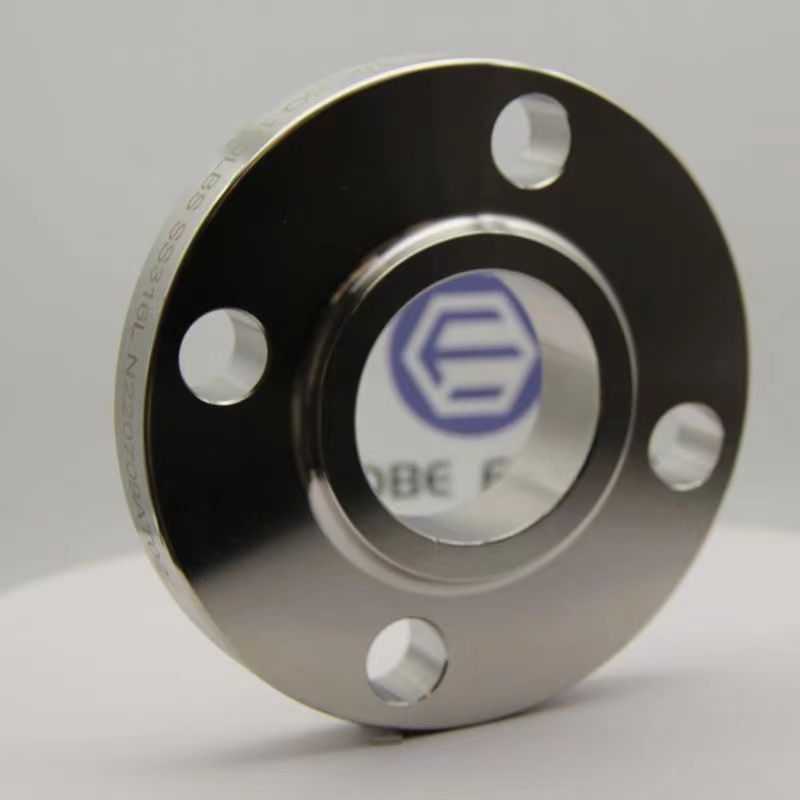Edmond likes to share design blog posts on social media and in online forums. He has a degree in Graphic Design, and he loves working with Adobe Photoshop and Illustrator. In his spare time, Zachary enjoys hiking and camping with his friends.

Flanges are critical components in piping systems, serving as connectors that enable the assembly and disassembly of pipes, valves, and other equipment. These circular discs with protruding rims or collars facilitate secure connections through bolts and nuts, creating joints that ensure the integrity of the system. Flanges play a vital role in various industries, including petrochemicals, oil and gas, water treatment, and manufacturing.
Flanges are classified according to their pressure-temperature ratings, facing kinds (flat face or raised face), material compatibility, and international standards. Their adaptability stems from their ability to provide dependable, leak-proof connections while also facilitating maintenance, repairs, and alterations in industrial operations. Understanding the many flange types is critical for engineers and designers to ensure that piping systems perform properly, safely, and efficiently across a wide range of applications.
What Is The Significance Of Flange Facing?
Flange facing is essential for achieving a strong and effective seal between two flange surfaces. The facing provides a smooth, flat, or grooved surface that improves gasket compression and prevents leaks in piping systems. The choice of facing type, such as flat face (FF), raised face (RF), or ring-type joint (RTJ), is critical in attaining adequate sealing, assuring integrity, and improving the performance of the flange connection.
Classification of Flanges
Flanges play an important role in pipeline systems, providing connectors for pipes, valves, and other equipment. Flange classification is a methodical technique that uses a variety of parameters. This article will go into the complex area of flange classification, examining the various types of flanges.
➢ Welding Neck Flanges (WN)
Welding Neck Flanges (WN) features a long tapered hub, providing a smooth transition from pipe to flange. Widely used in high-pressure and high-temperature applications, the extended neck offers structural support when welded to the pipe. WN flanges find application in critical systems where strength and integrity are crucial, making them suitable for a diverse range of industrial piping configurations, particularly those requiring robust connections in demanding environments.
➢ Slip-On Flanges (SO)
Slip-on flanges (SO) have a little larger bore than the pipe and can be installed simply by slipping over it. They have a raised face that helps with sealability. SO flanges are widely used in low-pressure, non-critical applications requiring quick alignment and installation. Their simplicity makes them a feasible choice in situations where efficiency and assembly convenience are critical, and they are adaptable to a wide range of industrial pipe systems.
➢ Socket Weld Flanges (SW)
Socket Weld Flanges (SW) have a socket-like end for accommodating the pipe, connected through fillet welding. Ideal for smaller sizes and moderate pressure and temperature conditions, SW flanges offer ease of alignment and frequent dismantling. Their design makes them suitable for applications where efficient assembly and disassembly are essential. Socket weld flanges find use in various industries, providing flexibility and reliability in piping systems with specific size and pressure requirements.
➢ Lap Joint Flanges (LJ)
Lap Joint Flanges (LJ) are made up of a flat, circular piece with a loose lap joint stub end. The stub end of the pipe is welded to allow the flange to revolve freely. LJ flanges are ideal for systems that require quick alignment and frequent dismantling. They are used in sectors with dynamic piping requirements, providing a viable solution in settings where adaptability and ease of maintenance are critical.
➢ Threaded Flanges (TH)
Threaded flanges (TH) have threaded holes, allowing them to be screwed onto the pipe. Commonly used in low-pressure, non-critical applications, these flanges offer ease of assembly. Threaded flanges provide a secure connection without the need for welding, making them suitable for systems where simplicity and quick installation are priorities. They find applications in various industries, particularly those where frequent maintenance is required.
➢ Blind Flanges (BL)
Blind flanges (BL) are solid plates with no bore that are typically used to temporarily block a pipeline. Their most common application is to close the end of a piping line, notably during pressure testing. Blind flanges are a secure and effective way to isolate pipeline sections, assuring safety and making maintenance easier. Blind flanges are crucial components in many sectors, notably during system testing and maintenance.
Final Words
The classification of flanges into distinct varieties is a laborious process guided by a variety of factors. Pressure-temperature ratings, facing kinds, material compatibility, size and dimension standards, flange type, and compliance with international standards are all important concerns. Understanding these factors is critical for engineers and designers to properly select and use flanges, assuring the optimal performance, dependability, and safety of piping systems in a variety of industrial applications.
